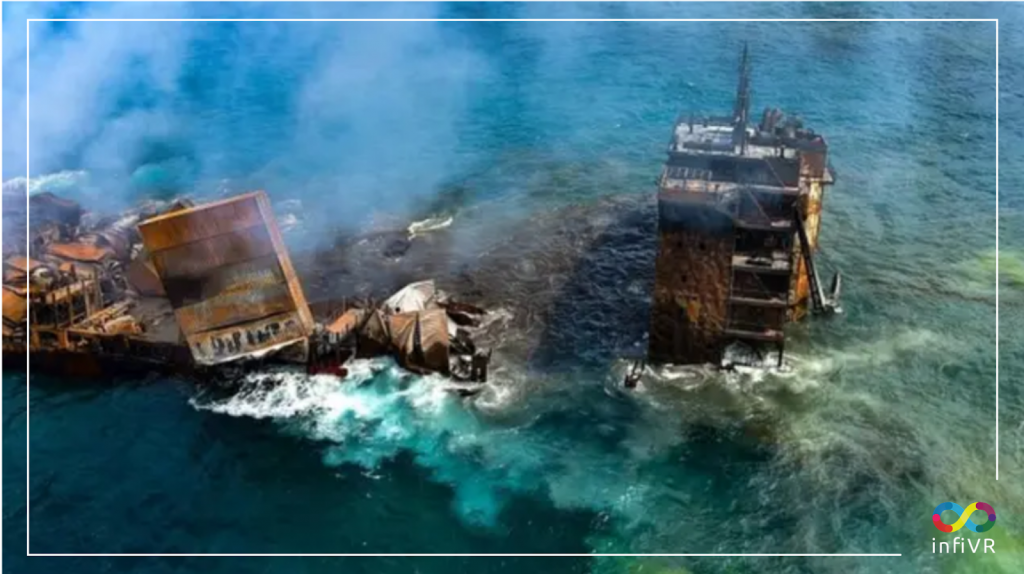How can Virtual Reality and Metaverse be used for Acid Safety Training?
Importance of InfiVR’s Acid Safety Training
Metaverse and Spatial Computing: The Future of Acid Safety Training
Why VR Acid Safety Training is Important?
You are all dressed up, standing in a high-tech virtual space. Alarms are going off, and an acid pipe is spraying acid everywhere across the floor due to spill. Fumes are rising, and you’re feeling the pressure because your VR environment simulates exposure effects in real time. But instead of panic, you calmly work through the emergency protocol: neutralizing the spill, securing the area, and protecting your teammates.
This is not the future—it’s happening now. AR and VR, together with spatial computing and the metaverse, represent a future that’s now changing the face of how industries approach acid hazard safety training. The training doesn’t stop with spill avoidance. Assume to simulate a full-scale acid leak, like evacuation drills or emergency response coordination and containment, all in the comfort of a virtual environment. Workers get to feel the weight of their decisions when they learn by doing instead of just passively absorbing information.
Learning from Real Accidents
In 2016, a mixing mishap at MGPI Processing in Kansas resulted in a disastrous release of chlorine gas after sulfuric acid was mixed with sodium hypochlorite. More than 140 people were injured; thousands had to evacuate. Could VR have changed this story? Perhaps. Training through virtual scenarios would have made workers familiar with marked hazards, sequence checks, and the immediate protocol for response, making error unlikely.

Take another example, X-Press Pearl ship accident in 2021; leakage of nitric acid from a shipping vessel caused the devastation of marine ecosystems. Simulations in AR could have prepared the crew better to recognize and react on time with the rehearsal of emergency procedures in simulated conditions that were tailor-made to maritime risks.
Both incidents point toward the shortfalls of traditional training methods and how AR/VR could have contributed—in terms of muscular memory, situational awareness, and teamwork in life-like scenarios.
Metaverse and Spatial Computing: The Future of Acid Safety Training
Enter the metaverse: a virtual world where multiple teams across geographies can practice together in acid hazard simulations. A plant operator in Germany could be working with a chemical expert in India in the same virtual space. Spatial computing brings real time data like acidity levels, pipeline integrity or fume dispersion, creation dynamic training scenarios.
The AR/VR Edge
Proactive Hazard Recognition
AR overlays safety information in real-world environments, helping workers recognize potential acid hazard zones before incidents occur. For example, workers having AR-enabled headsets or goggles can see visual warnings highlighting risky equipment or tanks storing any corrosive chemicals.
Enhanced Emergency Response Training
For instance, spill response modules under VR simulations would include wearing virtual PPE, activating the alarms, turning off valves, and applying neutralizing agents. In addition, haptic feedback helps users experience the pressures of running valves, thus making it a much more real simulative activity.

Post-Incident Analysis
AR and VR solutions allow the replay of trainings, and teams can discuss their action plans, find gaps, and refine their strategy. Such iterative learning creates ongoing improvement and conditions workers to face the most unpredictable challenges.
Real-World Adoption
Some companies already use AR and VR in hazardous material training. For example, ExxonMobil has introduced immersion in VR for training in chemical spills and refinery events into its safety programs. Workers report better retention and higher confidence when solving emergencies compared to traditional training methods.
InfiVR also provides a tailored Acid Hazards Safety Training module specifically aimed at educating employees about the dangers of acid handling and encouraging safe workplace practices.
Utilizing Virtual Reality (VR) technology, this training provides an immersive and realistic environment where employees can engage in lifelike simulations of critical situations without the associated risks of real-world scenarios. This immersive training approach improves learning and retention by 48% by enabling employees to practice and master their responses to different situations, resulting in enhanced preparedness in actual environments.
The capacity of VR-based safety training is supported by research indicating that immersive learning experiences significantly improve knowledge retention. For instance, a study conducted by PwC revealed that workers in VR-supported training programs were as much as four times more attentive and finished training 1.5 times quicker compared to those taking it in regular classroom learning.
At InfiVR, we specialize in creating AR and VR solutions customised to your industry’s needs. Picture a training program where workers can learn to handle acids in realistic simulations. From putting on PPE to neutralizing acid spills, our solutions leverage the most advanced advancements in spatial computing to deliver an immersive, interactive, and safe learning experience.
Our Edge:
Customized Modules- Customized training programs focused on your precise risks of operation and real-time feedback that evaluates your worker’s performance in detail by analytics and even heat maps of their actions.
Global Accessibility- Use the metaverse to connect teams across the globe for collaborative learning.
Acid hazard training is not longer just compliance – it’s confidence, agility, and life-saving instincts in the high-risk world. With infivr, you’re not only getting your workforce ready; you’re securing the future of your operations.
Learn more on InfiVR’s VR Acid Hazard Training
Schedule a demo with us at hello@infivr.com